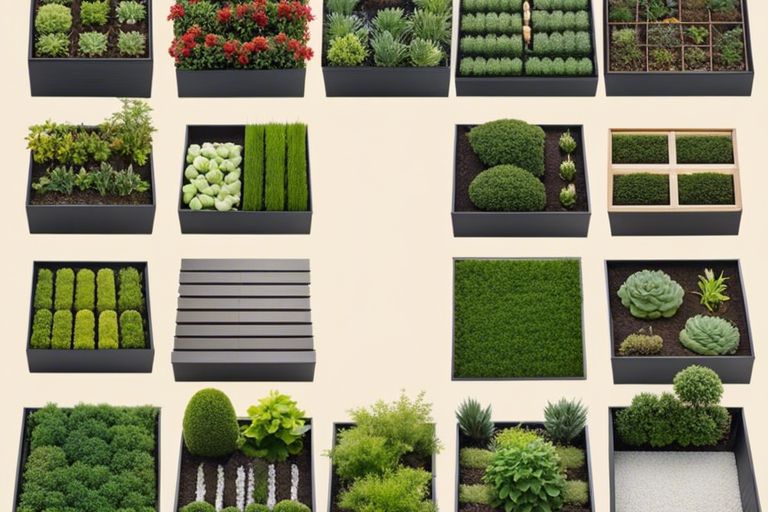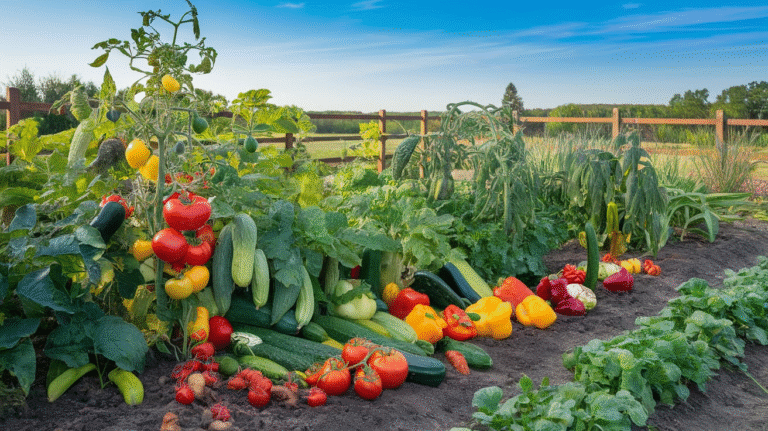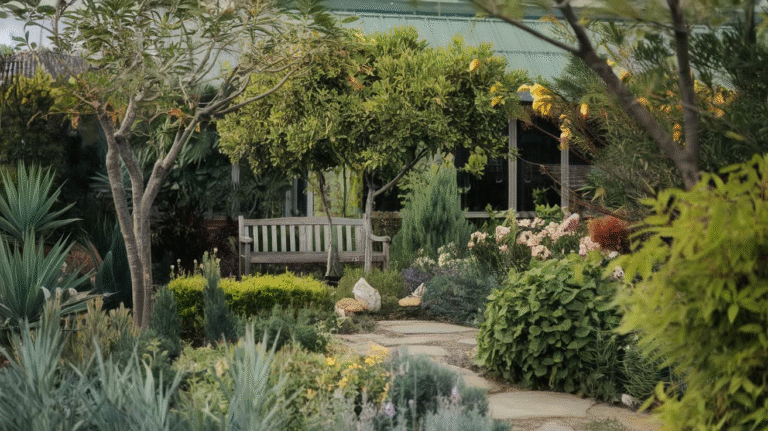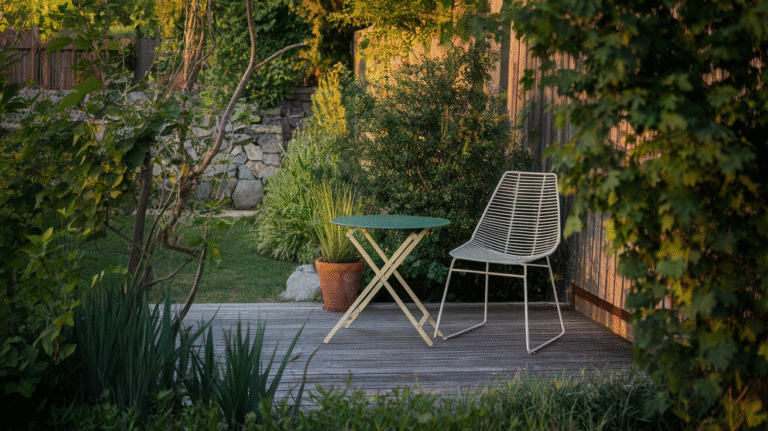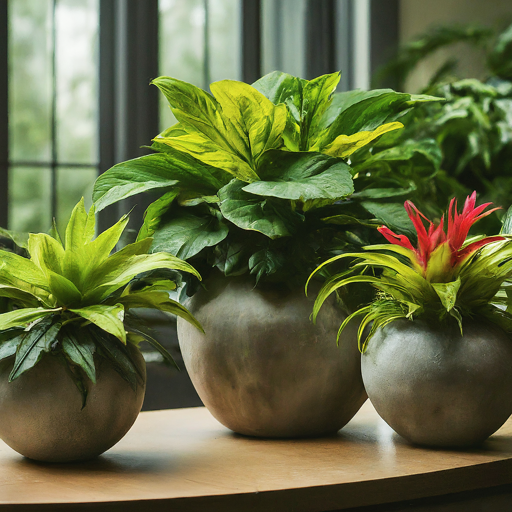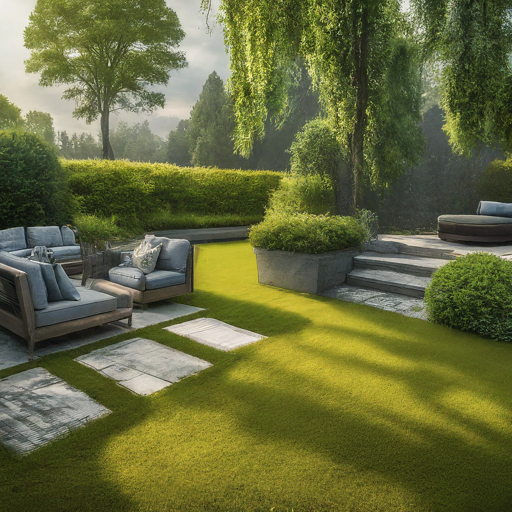16 Back Garden Ideas to Transform Your Outdoor Space

Most back gardens start off the same way—just a patch of lawn, maybe a tired fence, a few mismatched pots. But with the right idea, even the most uninspiring plot can become a sanctuary.
I’ve turned postage-stamp yards into peaceful escapes, and once helped a friend revamp her overgrown garden into a mini wine bar with twinkling lights and raised beds.
1. Create Distinct Zones
Think of your back garden like an open-concept living room—it needs clear areas for different activities. One of the biggest mistakes I see is treating the whole garden as one giant lawn or patio.
Break it up. Have a dining area, a lounging nook, maybe even a play corner or a raised bed kitchen garden. You can define zones using decking, gravel paths, changes in plant height, or even outdoor rugs.
In a 2023 survey by Houzz, 65% of homeowners said they now use their garden as a multifunctional space, including work-from-home spots and entertaining areas.
Start with how you want to use your space, then build the layout around those needs.
2. Use Vertical Space
When floor space is limited, go up. This trick saved my tiny backyard apartment garden. I installed a vertical planter wall using salvaged wood, filled it with herbs and succulents, and watched it become the focal point.
Use trellises, wall planters, or tall shelving units to give your back garden structure. Climbing plants like clematis, jasmine, or even tomatoes work well and can soften harsh fences.
It adds dimension, creates privacy, and lets you squeeze in more greenery without sacrificing square footage.
3. Build a Fire Pit Area
Fire pits are magnetic. People gather around them, conversations linger, and marshmallows mysteriously appear. I built a DIY fire pit with a few concrete blocks and gravel, and it became the go-to spot for evening hangouts.
Choose from sunken, raised, portable, or built-in depending on your budget. Make sure there’s good ventilation and keep it away from trees or overhangs.
According to a 2022 Landscaping Trends Report, fire features increased in popularity by 38%, showing they’re not just trendy—they’re loved.
Surround it with simple seating like adirondack chairs, benches with cushions, or even a circle of large stones for a rustic feel.
4. Add a Pergola or Shade Structure
Nothing transforms a back garden like a structure that adds shade and shape. I helped a neighbor install a simple cedar pergola over their patio, and suddenly it felt like a high-end resort.
Pergolas give your space definition. They also provide the framework for hanging lights, climbing plants, or curtains.
If you’re on a budget, consider shade sails or canopy umbrellas. They’re not permanent, but they give instant relief on hot days and define the space visually.
5. Install Raised Garden Beds
Raised beds are not just easier on your back—they’re also easier to manage, especially if you’re new to gardening.
I built mine with recycled pallets and planted kale, tomatoes, basil, and strawberries. The yields were better than expected, and it helped control pests and weeds.
Use cedar or pressure-treated wood, avoid chemicals that can leach into soil, and fill with a 50/50 mix of compost and soil. Make sure the bed is at least 12 inches deep for root crops.
Stats show that households with raised beds report a 30–40% increase in produce yield compared to flat soil gardens.
6. Embrace Outdoor Lighting
A back garden without lighting disappears after sunset. But a few well-placed lights can turn your garden into a magical space that works 24/7.
Use a mix of solar stake lights along paths, string lights across seating areas, and uplights for plants or trees. I once repurposed an old chandelier and wired it to hang in a tree—it changed the entire vibe.
Warm light (2700K–3000K) is best for gardens. Avoid harsh white lights—they feel sterile.
Lighting adds safety, ambiance, and allows for evening relaxation or parties.
7. Build a Garden Bar
This one’s for the entertainers. I helped a friend convert an old potting shed into a garden cocktail bar with a fold-down counter, mini fridge, and a rack for glasses. It was the highlight of every summer night.
You don’t need a big setup. A bar cart on wheels or a wall-mounted fold-out bar does the trick.
Add bar stools, festoon lights, and maybe a planter full of mint for mojitos on demand.
It’s not just fun—it’s a conversation starter.
8. Create a Wildlife-Friendly Corner
Your garden isn’t just yours—it belongs to the birds, bees, and butterflies too. I dedicated a corner of my back garden to pollinators with lavender, coneflowers, wildflowers, and a shallow bird bath.
You can also add bee hotels, log piles for insects, or climbing ivy for nesting birds.
Studies from the Royal Society for the Protection of Birds (RSPB) show that urban gardens are now vital sanctuaries for declining insect and bird populations.
Plus, watching a butterfly land near your chair is just good for the soul.
9. Install a Water Feature
You don’t need a koi pond. A small bubbling fountain, ceramic bowl with floating plants, or even a repurposed watering can turned into a trickle feature adds sound and calm.
I added a solar-powered fountain to a barrel planter, and now I have dragonflies visiting daily.
Water features also improve humidity, which helps nearby plants thrive. Just keep water moving to avoid mosquitoes.
It’s a small touch that makes a big sensory difference.
10. Add a Garden Path
Even a short path adds purpose and charm. Use gravel, stepping stones, reclaimed bricks, or wooden rounds to create it.
A curving path makes a small space feel longer, and it subtly guides visitors through your space. I built one through my herb garden and it became the most photographed part of my yard.
Layer the sides with low-growing plants like thyme, alyssum, or sedum that spill over the edges.
Paths make gardens feel intentional—not just planted, but designed.
11. Set Up a Container Garden
No beds? No problem. Containers are portable, flexible, and ideal for renters or awkward spaces.
Use a mix of sizes and materials—terra cotta, ceramic, galvanized steel—and group them by color or plant type.
I once built an entire garden on a paved yard using pots: tomatoes in buckets, nasturtiums in hanging baskets, and peppers in deep bins.
Just make sure containers have good drainage, and use potting mix, not garden soil.
According to the National Gardening Association, container gardening grew 200% between 2018 and 2023, especially among urban gardeners.
12. Build a Small Greenhouse
A greenhouse doesn’t need to be massive. A cold frame, mini hoop house, or even a converted cabinet with clear doors can extend your growing season.
I salvaged old windows and built a simple lean-to greenhouse that now houses seedlings, chillies, and my winter spinach.
It doesn’t just protect plants from frost—it gives you a controlled growing environment and boosts productivity.
Greenhouses help you start earlier, grow longer, and experiment more.
13. Make a Kids’ Play Area
If you have kids, your garden should invite play—not just tell them to stay off the grass. A sandbox, tree swing, mud kitchen, or DIY climbing wall adds fun without clutter.
I built a pallet fort once using scrap wood and painted it rainbow-bright. It cost under $50 and kept three kids busy for two summers.
Use soft ground cover like bark mulch or rubber mats under play zones for safety.
Play areas don’t need to be large—just creative and kid-approved.
14. Plant a Living Wall or Hedge
A fence doesn’t have to be plain. Add hedging plants, espaliered fruit trees, or a living green wall.
I planted photinia along one border and trained cordon apples on another. They act as screens, boost privacy, and offer food too.
Living walls can be created with stackable planters, felt pockets, or wooden grids filled with greenery. Use drought-tolerant plants if you’re not one for daily watering.
It adds texture, color, and a sense of lushness.
15. Use Smart Storage
Storage doesn’t have to be ugly. Combine utility with style. Think benches with hidden compartments, shed walls with tool racks, or a trellis that doubles as storage hooks.
I once disguised a compost bin behind a bamboo screen and hid garden tools inside a painted vintage locker.
Vertical storage is especially useful in small gardens. Use it to hang hoses, tools, gloves, and watering cans out of the way but within reach.
Good storage keeps your garden from looking cluttered—even after a busy day of planting.
16. Design for All Seasons
Don’t let your garden fade after summer. Include evergreens, winter-flowering shrubs, and structural plants to keep it alive year-round.
Add grasses like miscanthus, winter-flowering hellebores, or witch hazel for color and texture in the colder months.
Also think about hardscape—wooden benches, stone sculptures, or painted pots all look good even when the blooms fade.
Year-round interest means your garden doesn’t disappear when the weather does.
Conclusion
Transforming your back garden isn’t about how much land you have—it’s about how smart you are with the space. I’ve seen tiny patios become havens and big gardens go to waste. The difference is in the planning, the personality, and the willingness to make it your own.
Start with one or two of these ideas. Maybe it’s the vertical herb wall, the DIY fire pit, or just better lighting. But once you take that first step, the rest follows.

